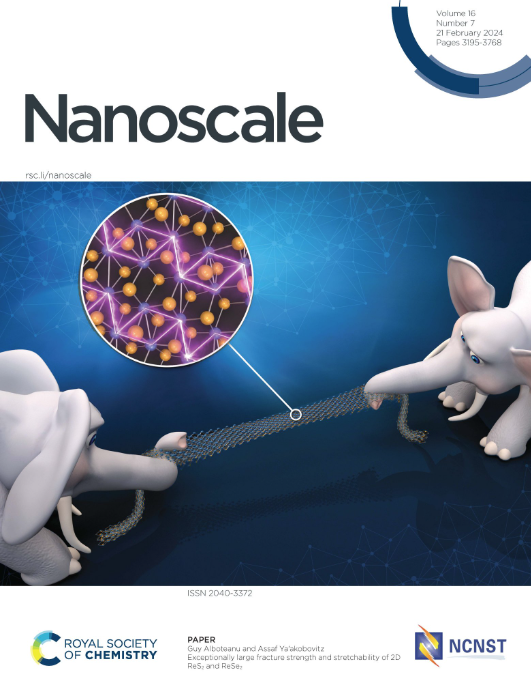Lateral heterophase electric polar topological superstructures of monolayer SnS: A first-principles computational study
IF 5.8
3区 材料科学
Q1 CHEMISTRY, MULTIDISCIPLINARY
引用次数: 0
Abstract
Ferroelectric topological structures in two-dimensional (2D) materials have emerged as a promising platform for exploring novel topological electronic properties and applications. To date, the reported topological structures have been limited to single-phase 2D materials with spatially varying polarization distributions. Many 2D materials exhibit multiple ferroelectric phases; however, topological structures that combine these phases remain largely unexplored. This is significant because the coexistence of multiple phases plays a fundamental role in the ferroelectric properties of three-dimensional ferroelectrics. In this study, the lateral heterophase superstructures (LHPS) consisting of the α and δ phases of SnS are investigated using the first-principles computational methods. The similar threefold bonding of α and δ phases facilitates the formation of atomically sharp and stable morphotropic phase boundaries (MPB) in one-dimensional (1D) LHPS. The 2D-LHPS with a topological ferroelectric flux-closure can be designed, where the two rectangular and polarized structures (the α and δ phases) are assembled into square superstructures, exhibiting the distinctive nested flux-closure polarization patterns. This work extends the family of ferroelectric topological structures to encompass 2D ferroelectric materials, contributing to the advancement of miniaturized and highly integrated ferroelectric topological electronics.单层SnS的横向异相电极性拓扑超结构:第一性原理计算研究
二维(2D)材料中的铁电拓扑结构已成为探索新型拓扑电子特性和应用的有前途的平台。迄今为止,报道的拓扑结构仅限于具有空间变化极化分布的单相二维材料。许多二维材料表现出多个铁电相;然而,结合这些相的拓扑结构在很大程度上仍未被探索。这是非常重要的,因为多相的共存在三维铁电体的铁电性能中起着重要的作用。本文采用第一性原理计算方法研究了SnS中由α相和δ相组成的横向异相超结构(LHPS)。在一维(1D) LHPS中,α相和δ相类似的三重键有利于形成原子锋利和稳定的嗜形相边界(MPB)。可以设计出具有拓扑铁电通量闭合的2D-LHPS,其中两个矩形和极化结构(α相和δ相)组装成方形上部结构,表现出独特的嵌套通量闭合极化模式。这项工作将铁电拓扑结构家族扩展到包含二维铁电材料,有助于推进小型化和高度集成的铁电拓扑电子学。
本文章由计算机程序翻译,如有差异,请以英文原文为准。
求助全文
约1分钟内获得全文
求助全文
来源期刊

Nanoscale
CHEMISTRY, MULTIDISCIPLINARY-NANOSCIENCE & NANOTECHNOLOGY
CiteScore
12.10
自引率
3.00%
发文量
1628
审稿时长
1.6 months
期刊介绍:
Nanoscale is a high-impact international journal, publishing high-quality research across nanoscience and nanotechnology. Nanoscale publishes a full mix of research articles on experimental and theoretical work, including reviews, communications, and full papers.Highly interdisciplinary, this journal appeals to scientists, researchers and professionals interested in nanoscience and nanotechnology, quantum materials and quantum technology, including the areas of physics, chemistry, biology, medicine, materials, energy/environment, information technology, detection science, healthcare and drug discovery, and electronics.
 求助内容:
求助内容: 应助结果提醒方式:
应助结果提醒方式:


